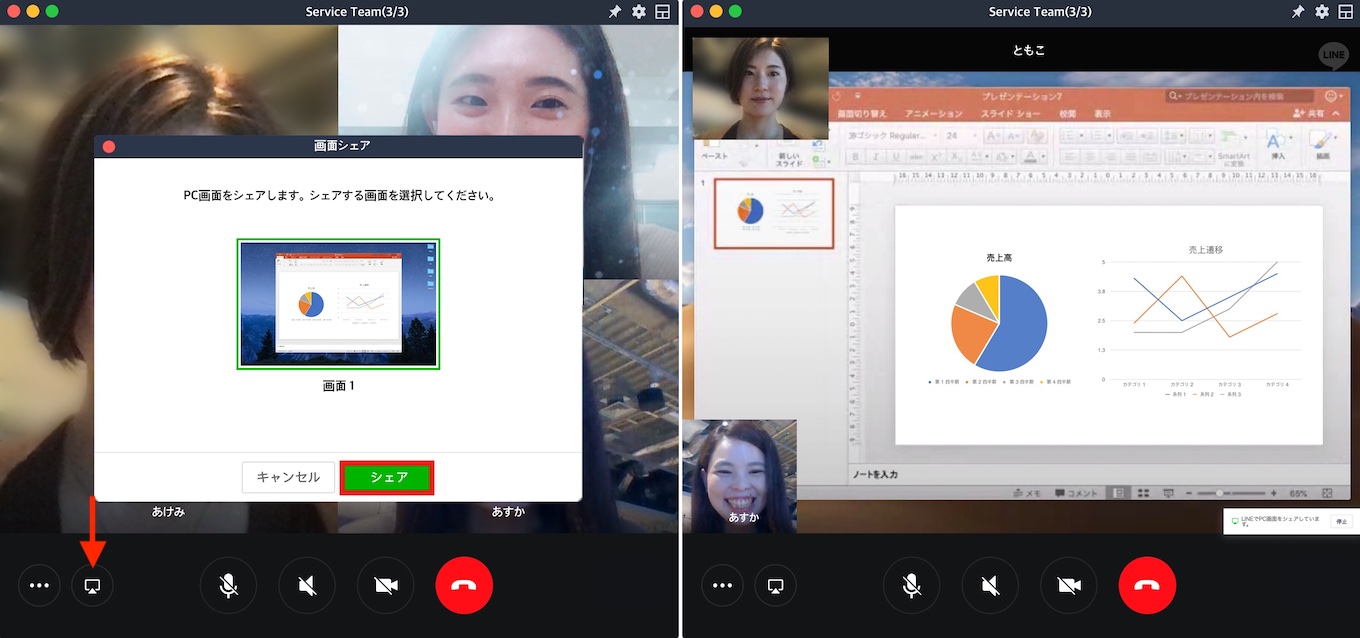

#Line for mac sync Bluetooth#
Step 4: If you want to use AirDrop, you don't have to worry about a Bluetooth connection, just make sure your devices are on the same Wi-Fi network. Now, with any app that works with Handoff, you can see a Handoff icon in your Mac's dock that you can use to switch to your iPhone. Step 3: On your iPhone, go to Settings > General > AirPlay & Handoff. Keep your iPhone near and turned on, and wait for your MacOS to detect it so you can pair the devices by choosing Connect.

If you haven't paired the devices before, select the Bluetooth symbol in the upper-right menu of MacOS and select Bluetooth preferences. Step 2: Connect your iPhone to your Mac via Bluetooth. Step 1: Check that your iPhone and Mac are connected to the same Wi-Fi network. To make a wireless connection from your iPhone to your Mac and take advantage of features like Handoff, AirPlay, AirDrop, Continuity Camera, Instant Hotspot, and Universal Clipboard, make sure the following are in place. You can then safely unplug the cable from your iPhone and Mac.ĭigital Trends Connect an iPhone to Mac via Bluetooth Step 6: When you finish and want to disconnect your iPhone, click the Eject icon to the right of it in the Finder sidebar. Now you can visit the syncing menu in Finder without needing a cable connection. Under Options, select Show this iPhone when on Wi-Fi. In Finder, check that your iPhone is still selected, and that you are in the General section. That's why Apple has added a method to switch to Wi-Fi syncing after your first big setup. Step 5: Plugging in your iPhone every time that you want to sync data can be exhausting. Image used with permission by copyright holder Step 4: Then, use the various tabs at the top, directly below your iPhone details, to work with the content you need in Finder. Simply follow the prompts for these actions.

#Line for mac sync update#
Step 3: You may be asked to Trust the device or update your iPhone to the latest iOS version if you haven’t already. The iPhone 15’s chip challenges Intel’s fastest desktop CPU - but there’s a catchīest Apple Deals: MacBooks, AirPods, iPads, iMacs, AirTags and more Step 2: In the sidebar, select your iPhone in the Locations section. Step 1: Plug your phone into your computer and open Finder. If you’re running an older version of MacOS, before Catalina, you’ll use iTunes to perform these actions. If you’re able to make this connection, whether with an adapter or not, you can use Finder on MacOS Catalina or later to work with your data as well as update your iPhone. The bottom line is that unless you have an iPhone cable and a Mac port with matching connectors, you’ll need to grab an adapter (or the appropriate cable) to physically connect it. On the other hand, if your iPhone uses a USB-C to Lightning cable and your computer only has a USB port, like with the MacBook Air M1, 2020, it's recommended that you utilize a Lightning to USB cable to make the connection.
#Line for mac sync pro#
But if your Mac only has a USB-C port, for instance, a MacBook Pro 2021, you’ll need an adapter. If your iPhone uses a Lightning to USB cable and your Mac has a USB port, you can simply plug it right in. However, depending on which device models you own, you may need an adapter. You’ll simply use the charging cable for your iPhone to make the connection. To sync content, remove data and settings, or update your iPhone, you can use a cable to connect it to your Mac. FelixMittermeier/Pixabay Connect an iPhone to Mac using a cable


 0 kommentar(er)
0 kommentar(er)
